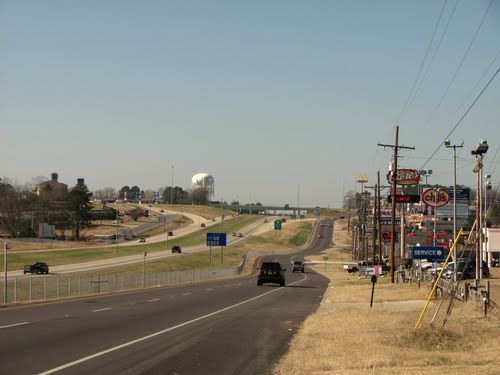
By: Jarrett Carter Sr. – @jlcarter_sr
One of the unheralded HBCU alumni associations in the country is TJAM, a collection of black college graduates stationed in Washington D.C. with ties to Tougaloo College, Jackson State University, Alcorn State University and Mississippi Valley State University.
They host one of the Baltimore-Washington metropolitan area’s largest annual HBCU grad gatherings, raise thousands for student scholarships, and help to bolster recruiting for the Mississippi HBCUs in a region that is a national leader in its annual yield of high school graduates.
Their work is invaluable, and their commitment unquestioned. But their location is a problem, and a sign of the lack of investment and economic development in HBCU communities that may help to expedite the closure of several historically black campuses throughout the country.
Atlanta, Austin, Baltimore, D.C., Houston, Memphis, Nashville, New Orleans, Philadelphia – relatively speaking, they are the big planets in the HBCU ecosystem of affluence, political influence and connectivity between human capital and campus. These are cities which not only feature HBCUs in their education and business landscapes, but places where HBCU graduates can successfully build fulfilling professional and personal lives in the shadows of the campuses from which they graduated.
Graduates in these cities live in recession-proof pockets of the country, places where tech development, finance, secondary and higher education, hospitality and tourism, manufacturing and government can crank out wealthy black professionals in a relatively short period of time. These cities leave little to be desired in the way of nightlife, networking, business opportunities and socio-political mobility – a far cry from some of the land and livelihood-locked HBCU communities throughout the south.
This metropolitan movement that has been a quiet factor in HBCU alumni relations and philanthropy for the better part of 30 years, and one that is starting to become a larger issue for some public and private HBCUs, and an opportunity for others who are growing into their citified realities.
For schools like Howard, Texas Southern, Tennessee State, Xavier and other metropolitan HBCUs, the opportunity to live and learn against the backdrop of emerging black municipalities does much of the heavy lifting in the recruitment process. It goes a long way to tell a high school student trying to decide between Penn State and Howard that what HU lacks on gamedays in the fall, it more than makes up for in post-game afterparties in the District.
And for some HBCUs, urban expansion leads to more prosperous relationships within the private sector. Johnson C. Smith has become a major partner in the development of Charlotte’s West End, envisioning an area where dining and arts helps to bring a diverse population to the campus borders.
At Paul Quinn, a multi-year food service sub contract from its football field-turned-farm continues to brand the school alongside one of the most popular brands in professional sports, the Dallas Cowboys.
But these kind of partnerships don’t happen in places like Grambling, La., or Marshall, Texas. Disparate federal and state funding combined with a lack of political advocacy has stemmed expansion of HBCUs in matching that of nearby predominantly white counterparts in cities like Winston-Salem, NC and Tallahassee, FL.
That lack of expansion deprives communities of the businesses and brand which attracts more students and residents, which attracts more dollars, and attracts more corporations seeking to serve population growth.
HBCUs in rural locales lose their best talent and brain trust to metropolitan areas. Save for the few who can be recruited back in later years to serve as staff and faculty members, the HBCU brain trust produced in rural and remote regions often takes talent, treasure and attention to new cities and lives which await them.
Money and advocacy are just the primary casualties of campus communities which just aren’t exciting enough for single, young professionals, or stable enough for middle-aged professionals raising families and seeking to realize their greatest earning potential.
The grim geographic outlook doesn’t stop HBCUs from trying. Jackson State’s One University Place is an example of commercial and retail development as a campus extension. But more HBCUs must work to create the jobs and culture which can invite students to make a permanent move into their college city or town.
For some campuses, the potential and the money necessary for rapid development just aren’t there. But for other HBCUs, the time to create livable communities around an institutional anchor is now.
The survival of some HBCUs depends upon it.


